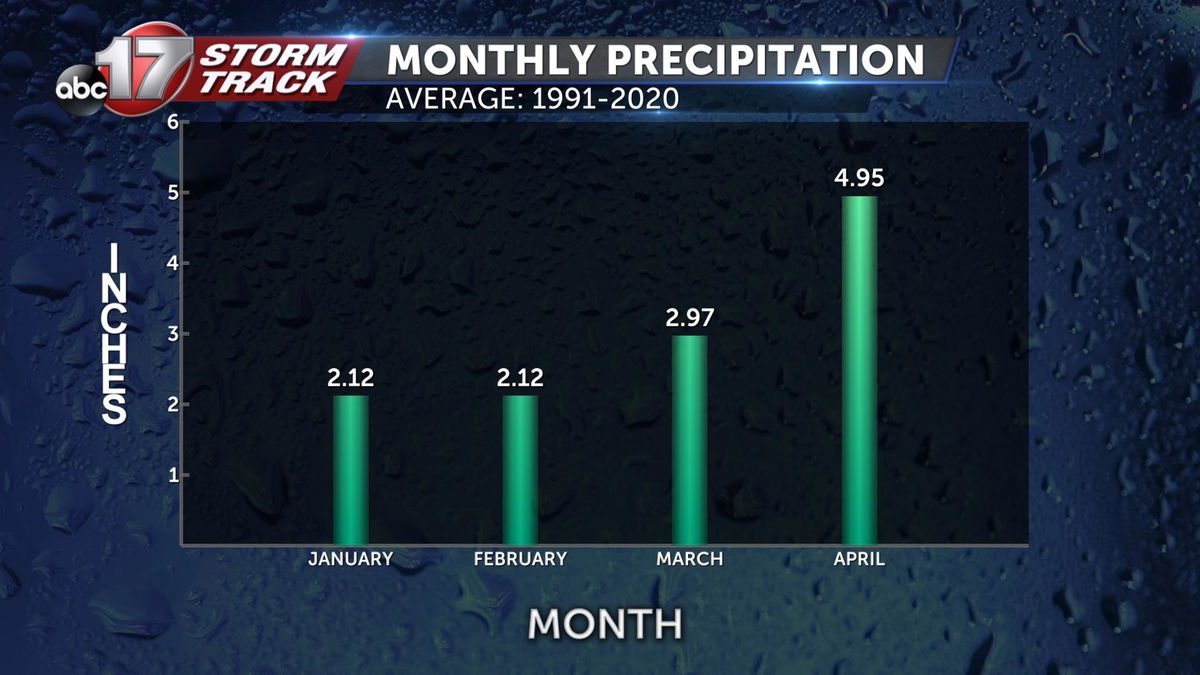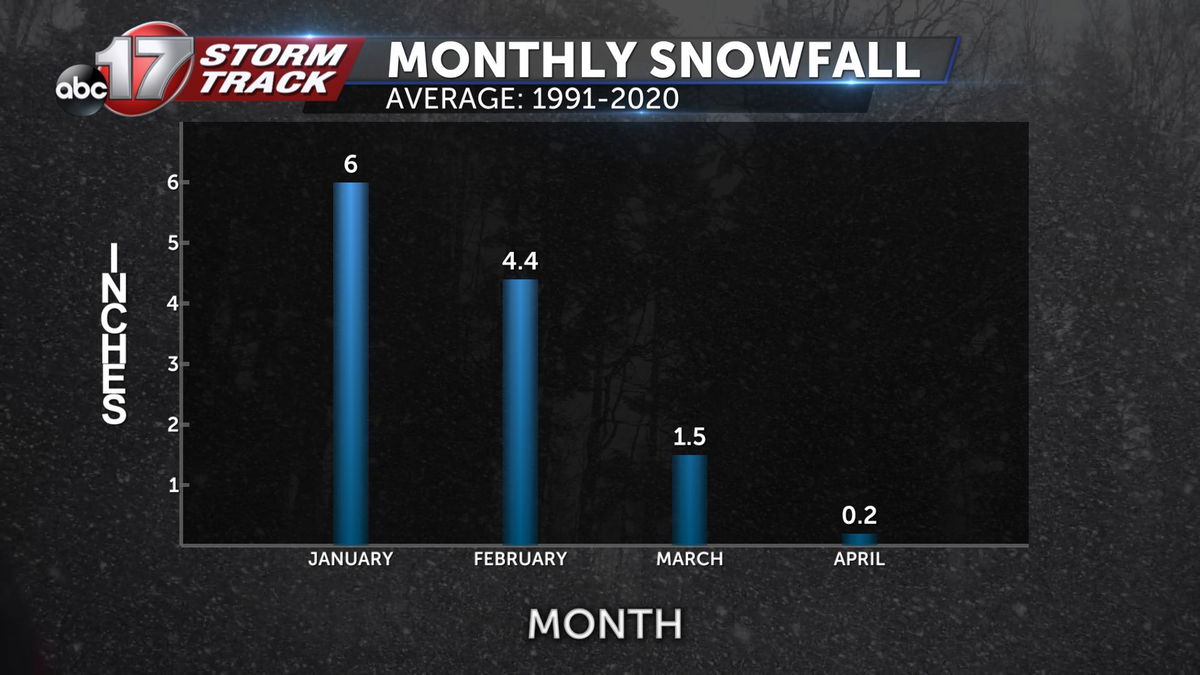Insider Blog: What climatology says we should expect for March
March first is the first day of meteorological spring. This marks the beginning of spring weather record keeping. Those very records can help to show what changes we can expect in the new month.
Well, let's first look at the last 30 years to see what we can reasonably expect in terms of wet weather.

January and February both give us right around 2 inches of precipitation a year, and that jumps up to nearly 3 inches as we head into march.
If we break down this wet weather to only snowfall, we see the clear signs that we are getting closer to spring. In January we see, on average, see right around 6 inches of snow. That drops to about 4.4 inches in February, and as we head into March we're down to just an inch and a half of snowfall.

That makes sense as we get towards the warmer parts of the year. Calculating this last month's temperatures, we find that the average high for the entire month was about 50 degrees, which is pretty spot on for the month's 30 year average. Based on averages, we can expect temperatures to steadily climb through the month of March. By the time we get to march 30th, our average high climbs into the low 60's for our average high.

Let's also consider daylight. We know we're getting more daylight everyday as we get farther from the winter solstice, and closer to the summer solstice. As we head into March, we're having to deal with one complicating factor; we'll start daylight saving time in a couple of weeks.

That will push our sunsets back to almost 7:00, 7:15, and then we're getting close to 8:00 over the next 8 weeks.
